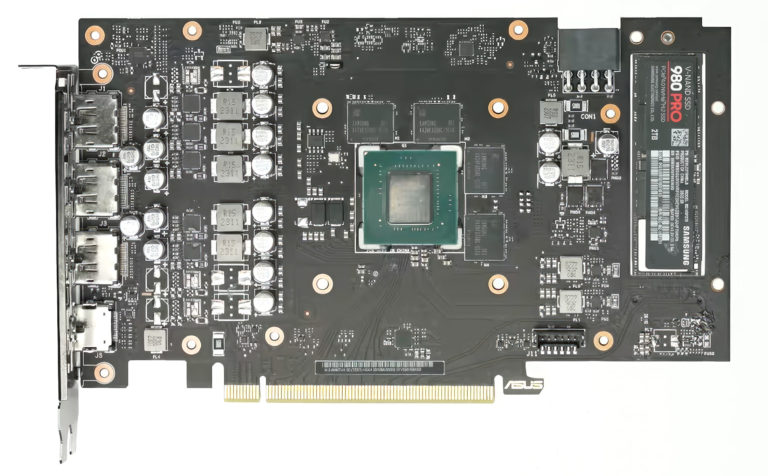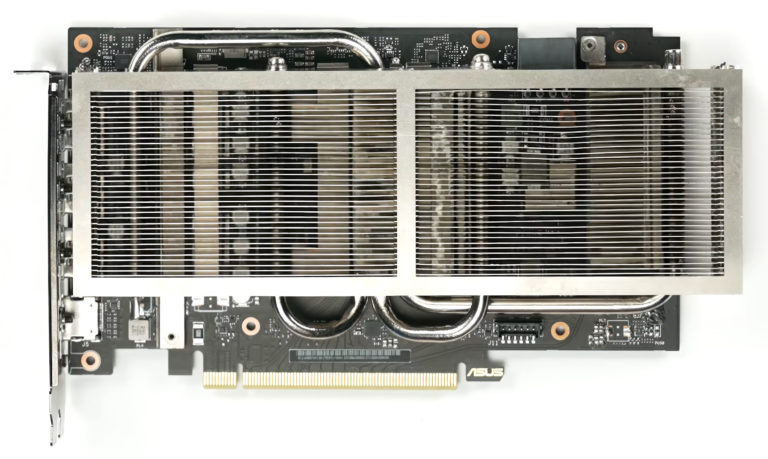ASUS wastes no PCIe lanes, offering GPUs with SSDs
ASUS came up with an interesting idea for consumer graphics cards.
ASUS RTX 4060 Ti DUAL with M.2 SSD slot, Source: Tony/ASUS
Currently, most entry-level and mid-range cards are limited to the PCIe Gen4 specification and 8 lanes. However, all of these cards will eventually be inserted into the full-size 16-lane slot. This is why cards such as the RTX 4060 series and Radeon RX 7600 series have a full-size connector, but not all lanes are electrically connected.
A video from Tony Yu (GM at ASUS) shows an RTX 4060 Ti Dual graphics card that can solve the problem of unused PCIe lanes. The company discovered that instead of creating dummy lanes, those lanes could still be used for other devices, such as high-speed SSD storage. They introduced a concept RTX 4060 Ti GPU with Samsung 980 PRO 2TB SSD attached to the back side.
ASUS RTX 4060 Ti DUAL with M.2 SSD slot, Source: Tony/ASUS
Most SSDs these days are installed in tight, inconvenient spaces on motherboards, often requiring the removal of graphics cards or even large CPU coolers to access them. However, users will have much easier access with M.2 SSDs mounted on a graphics card.
Likewise, it’s important to keep in mind that the graphics card will require more power, but that shouldn’t exceed its 10W max, something the RTX 4060 Ti can’t handle with just one 8-pin power connector.

ASUS RTX 4060 Ti DUAL with M.2 SSD slot, Source: Tony/ASUS
Tony outlines all aspects of this installation, including potential heat issues that may arise due to it being connected to a graphics card. It is interesting to note that the temperature is actually reduced by about 10C and the performance loss is minimal (6.8GB/s instead of 6.9GB/s for the maximum constant read speed).
This is because the PCB has been cut to allow airflow from the GPU cooler to reach the SSD, in fact, the cooler is attached directly to the SSD with thermal pads. The GPU and SSD simply share a large cooler, and one would imagine triple fan combinations would make this more efficient.
ASUS RTX 4060 Ti DUAL with M.2 SSD slot, Source: Tony/ASUS
It’s worth reminding our readers that the ASUS RTX 4060 Ti isn’t the first graphics card to have integrated solid-state drives (SSDs). AMD had this idea many years ago for professionals Radeon SSG Based on the Vega architecture, only that technology had a different purpose and was a less convenient SSD replacement. However, we can only hope that this idea will be used more widely by the mid-range GPU segment in the future.
source: Tony from ASUS via @olrak29_

“Unapologetic communicator. Wannabe web lover. Friendly travel scholar. Problem solver. Amateur social mediaholic.”




